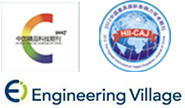Abstract:
The exploitation of resources in polar regions and marine environment leads to the joint action of low temperature, carbonation and chloride ion penetration on concrete structures, which aggravates the deterioration of concrete materials and structures. As a new type of composite material, the durability of ultra-high toughness cementitious composite (UHTCC) is an important index to evaluate its working performance. Through the rapid carbonization test of UHTCC material under ultra-low temperature and chloride ion erosion, the change law of carbonization resistance of UHTCC with different fiber volume contents under complex environment was studied. The results show that with the decrease of temperature, the carbonation resistance of UHTCC material is significantly reduced. When the temperature reaches −160℃, the carbonation depth of UHTCC material increases by about 58.76%. The appropriate amount of fiber has a significant effect on the carbonation resistance of UHTCC material. However, the carbonation resistance of UHTCC material decreases when the content exceeds the optimal content. At the same time, SEM shows that chloride ions can refine the internal pores of concrete and hinder the further diffusion of CO
2 inside the material. The regression model of UHTCC carbonation depth in extremely complex environment is proposed, and the research conclusion provides reference for the engineering application of UHTCC in complex environment.


 下载:
下载: